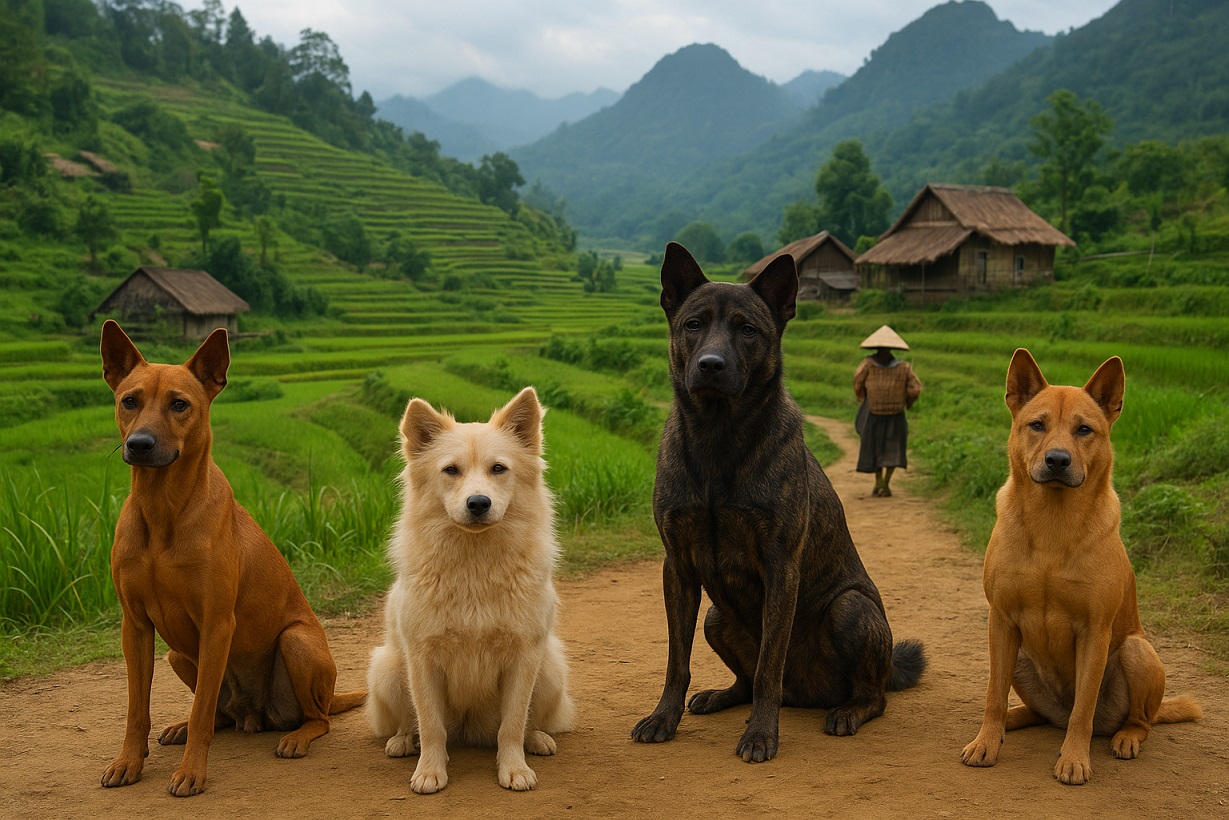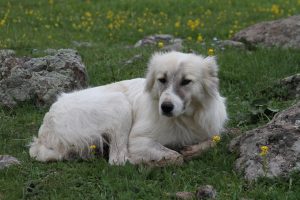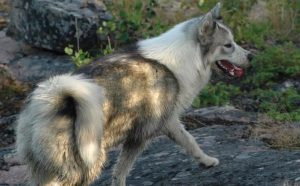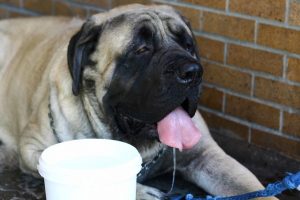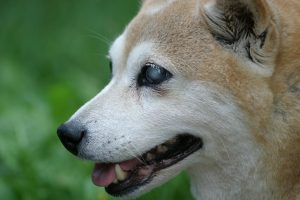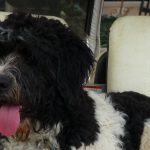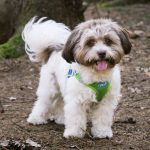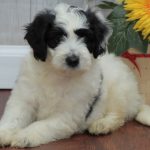Vietnam’s landscape and culture have shaped a handful of dog breeds and landraces that are unique to this corner of Southeast Asia. While in Vietnam, you can witness various breeds of dogs hunting in the highlands, keeping watch on rice paddies, and sharing quiet family life in villages. They are not just animals: they’re working partners, guardians, and part of family life.
This brief write-up introduces the principal native breeds, explains their histories and traits, and offers practical advice for anyone who wants to learn more or welcome one of these dogs into their home.
Table of Contents
The Four Greats
When people talk about “Vietnamese dog breeds,” they often mean a mix of formally recognised landraces and local types that have lived side-by-side with people for centuries. Four of these are commonly called Vietnam’s “four great dogs”: the Phú Quoc Ridgeback, the Bắc Hà dog, the Lài dog, and the H’Mông (Hmong) bobtail / Hmong dog. There are other regional dogs and local mixes, and genetic studies show a deep and complex history for Southeast Asian canines.
Dog Breeds Originated in Vietnam
Mentioned below are the four major dog breeds that originated in Vietnam. Let’s explore them one by one.
Phú Quoc Ridgeback — Vietnam’s island ridgeback
Overview and appearance
The Phú Quoc Ridgeback (Chó Phú Quốc) is the most famous native Vietnamese breed. It’s medium-sized and athletic, with a distinct ridge of hair that runs along the spine in the opposite direction to the rest of the coat, the same ridge phenomenon you see in the Thai Ridgeback and the Rhodesian Ridgeback. Phú Quoc dogs are often described as well-muscled, fast runners and good swimmers, traits that suit the island environment where they originated.
History and status
Phú Quoc Island’s isolation shaped this dog as a landrace, a locally adapted population rather than a laboratory-bred pedigree. Historical records and local folklore place these dogs on the island for generations; colonial-era naturalists made note of them, and more recently, the Vietnam Kennel Association has worked to document breed standards. The breed nearly disappeared at times, but interest in conservation and responsible breeding has grown. If you travel to Phú Quoc today, you might still see free-roaming examples and, increasingly, dedicated breeders who follow local standards.
Temperament and care
Phú Quoc Ridgebacks are loyal, alert and highly energetic. They do best with regular exercise and plenty of mental stimulation; hunting or tracking games suit them. Their short coat is easy to maintain, but they need socialization and clear leadership from a young age. Owners should be aware of the strong hunting instinct: secure fencing and supervised off-lead time are important.
Bắc Hà dog (Vietspitz / Hmong hunting dog)
Overview and appearance
The Bắc Hà dog is a spitz-type, medium-sized dog from northern Vietnam, particularly associated with the Hmong people of Lào Cai province. It’s robust, double-coated, and often has a curled tail and a perceptive, wolf-like expression. The breed is valued both for hunting and for guarding family property.
Cultural role and temperament
In mountain communities, the Bắc Hà dog is part of daily life: it helps track game, warns of intruders and forms close bonds with human families. They tend to be alert, loyal, and, with correct socialisation, good with children in their own household. Because they were bred in cold highland climates, their double coat suits harsher weather; in lowland or tropical settings, owners must pay attention to temperature and grooming needs.
Practical advice if you have a Bắc Hà dog:
- Provide consistent mental exercise — scent games and supervised off-lead walks.
- Groom the double coat more often during seasonal shedding.
- Keep training positive and firm — these dogs respond well to purpose and routine.
Lài dog (Chó Lài) — the Ma-River landrace
Overview and origin
The Lài Dog (Chó Lài), also known as the Vietnamese Highland Dog, is one of Vietnam’s rarest and most fascinating native breeds. Originating from the northern mountainous regions, especially in provinces like Sơn La and Lai Châu, this breed is known for its intelligence, loyalty, and survival instincts. The Lài dog has a wolf-like appearance with a dense coat, upright ears, and sharp, alert eyes; all traits adapted to the rugged highlands.
Traditionally, it has been used by ethnic minorities for hunting and guarding due to its agility, endurance, and keen sense of smell. Unlike many modern breeds, the Lài dog has preserved its instincts and independent temperament, making it both a skilled working dog and a devoted companion. Today, conservationists and dog enthusiasts in Vietnam are working to protect this ancient breed as a vital part of the nation’s cultural and biological heritage.
Conservation concerns
The Lài population is small and considered vulnerable; decades of crossbreeding and changing rural lifestyles have made truly pure Lài dogs rarer. This matters for biodiversity and for communities that rely on these dogs’ specific skills. If you’re interested in supporting Lài conservation, look for community breeders who document lineage and work with local preservation efforts.
H’Mông (Hmong) Bobtail — the mountain partner
Overview and appearance
The H’Mông dog (often called the Hmong Bobtail) is another northern breed closely linked to the Hmong people. It is a spitz-type with a distinctive short tail in many traditional lines. These dogs are used for hunting and household tasks, and they are prized for courage, cleverness and loyalty.
- They are hardy and often thrive on a simple diet paired with active work.
- Socialisation is crucial: because many H’Mông dogs are raised in working settings, they may need extra exposure to urban life and family routines if rehomed to a city household.
- Veterinary care and parasite prevention are particularly important in highland areas where access to clinics is limited.
Laos–Vietnam Ridgeback (Cross-regional breed)
The Laos–Vietnam Ridgeback is a fascinating and relatively rare cross-regional breed that reflects the shared cultural and geographical ties between Laos and Vietnam. This breed is believed to have originated naturally in the border regions where the Vietnamese Phu Quoc Ridgeback and Laotian native dogs interbred over generations. The result is a resilient, athletic, and intelligent dog that thrives in tropical climates and mountainous terrains.
Characterized by a muscular build, short coat, and the signature ridge of hair running along its back, a trait inherited from the Phu Quoc Ridgeback, the Laos–Vietnam Ridgeback is both striking and functional. These dogs are highly adaptive, known for their sharp instincts, courage, and loyalty to their families. Historically, they have served as hunters, guardians, and companions to local communities.
Today, dog lovers consider the Laos–Vietnam Ridgeback a symbol of regional heritage, representing the natural harmony between human life and the rugged landscapes of Indochina.
Other regional types and the Indochina “dingo”
Beyond the four widely recognised native types, Vietnam hosts several regional dogs and landraces, some call these “lai” (local mixes) or refer to cross-border types near Laos and Cambodia. The Indochina dingo (a regional, primitive dog) and mixed landraces are part of the complex picture of canine genetics in Southeast Asia. These animals reflect ancient migration and adaptation patterns rather than modern breed standards.
How these breeds fit modern life in Vietnam
Vietnam is changing fast: urban growth, pet culture, and mobile vets have altered how dogs live. Yet many rural households still keep traditional breeds for work. You’ll now see Phú Quoc Ridgebacks in urban homes as companion dogs, and Bắc Hà or H’Mông dogs sometimes find roles as family guardians or even companion animals in cities. Responsible breeders and rescue groups are working to balance tradition with modern animal welfare standards.
Health, genetics and ethical breeding
If you are considering one of these breeds, here are practical, experience-based tips:
Research breeders and rescue options
Look for breeders who document lineage and health checks, and ask for veterinary records. When possible, prioritise rescues or reputable local clubs that follow good welfare practices.
Understand landrace variability
Native breeds often have wide genetic diversity. That’s generally good for health, but it means appearance can vary between litters.
Ask about temperament and upbringing
Many native dogs are bred for function. Ask how puppies were socialized, whether they have exposure to children and other animals, and what training they’ve had.
Prepare for environmental needs
Highland breeds may struggle in hot lowland climates if not properly managed. Cooling measures and careful grooming are important.
Vaccinations, deworming and vet access
Make sure vaccination and parasite programs are up to date. If you live in a remote area, plan for reliable access to a clinic. These steps protect the dog and also help preserve the integrity of local breeds.
How to care for a native dog?
Feeding
Native working breeds are often less demanding in diet than show lines, but quality nutrition matters. Feed according to activity level: more active dogs need higher energy, while household companions need balanced portions to avoid obesity.
Exercise and mental stimulation
These dogs were bred to work and think. Scent work, tracking games, and varied walks keep them happy.
Grooming
Double-coated breeds (Bắc Hà and H’Mông) shed seasonally and need a brush-out during those times. Short coats like Phú Quoc are simple to maintain.
Training and socialization
Early positive training defines a dog’s ability to live in a family. For mountain breeds used to independent work, consistent boundaries and social exposure help a smooth transition.
Conservation and cultural respect
Preserving native breeds is not the same as keeping a show standard. It means sustaining local knowledge, encouraging ethical breeding, and supporting communities that have cared for these dogs for generations. If you adopt or buy a native Vietnamese dog, consider supporting community groups that document lineage and work to protect landraces from being lost to indiscriminate crossbreeding. Conservation isn’t just scientific; it’s cultural stewardship.
Final thoughts
Native Vietnamese dogs are living history. They are not only companions but a living link to the places and people that raised them. Whether you are an international visitor, a local family, or a lover of dog diversity, these breeds deserve respect, careful handling, and ethical breeding efforts. If you’re thinking of bringing one into your life, do your research, meet dogs in their local context, and choose a path that supports both the animal’s well-being and the cultural heritage it represents.

